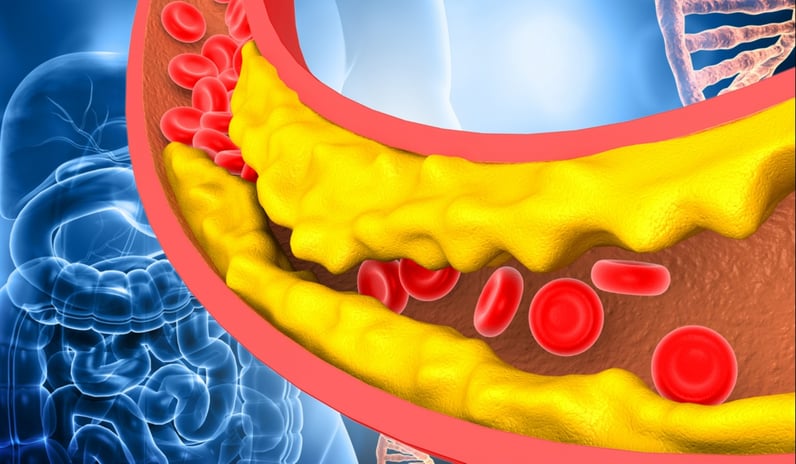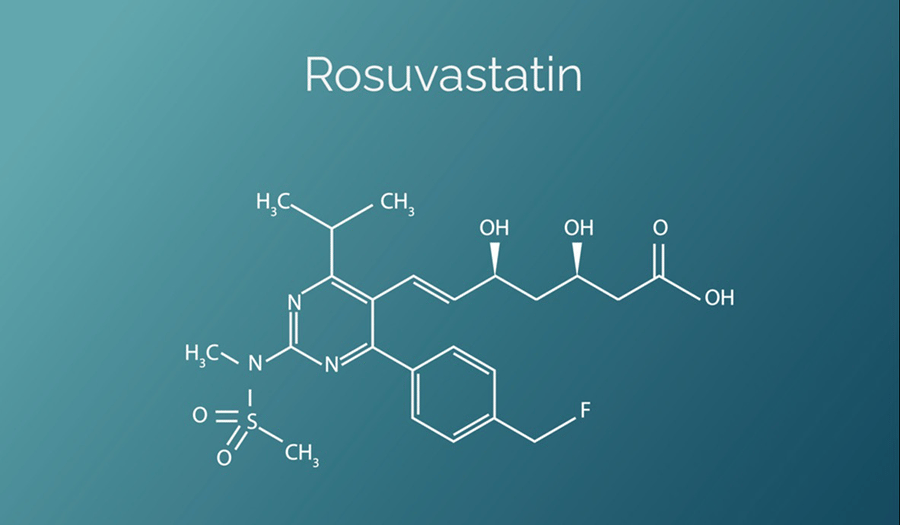Share this
rosuvastatin found to be stable for 10 days on VAMS
by James Rudge, PhD, Technical Director, Trajan on Aug 8, 2022 9:00:00 AM
An article by Min-Gul Kim et al at Jeonbuk National University Hospital in Korea published in the August 2021 issue of Translational and Clinical Pharmacology, reported on a validation of the cholesterol lowering drug rosuvastatin from volumetrically collected microsamples using Mitra® devices. The paper is entitled “Validation of LC-MS/MS method for determination of rosuvastatin concentration in human blood collected by volumetric absorptive microsampling (VAMS).”
The paper describes a thorough investigation into optimized extraction conditions to give quantitative extraction recoveries. The research group found that stability of the drug was high across all conditions tested, including in the presence and absence of a stabilizer.
The group concluded that their study results suggest that blood sampling at home using Mitra devices based on VAMS technology could be applied in clinical trials. They also concluded that VAMS samples could be delivered to an analytical laboratory for extraction within a guaranteed stability period at RT.
Health Impacts of Elevated Cholesterol Levels
 According to the World Health Organization (WHO), elevated cholesterol levels are estimated to cause 2.6 million deaths annually. The WHO reported that in 2008 the prevalence of raised cholesterol globally was nearly 40%. Raised cholesterol may be caused by lifestyle factors or genetic factors, or both.
According to the World Health Organization (WHO), elevated cholesterol levels are estimated to cause 2.6 million deaths annually. The WHO reported that in 2008 the prevalence of raised cholesterol globally was nearly 40%. Raised cholesterol may be caused by lifestyle factors or genetic factors, or both.
Genetics as an underlying cause can lead to a condition known as familial hypercholesterolemia (FH). FH occurs as a result of genetic mutations in the low-density lipoprotein (LDL) receptor gene.
It is known that untreated patients with familial hypercholesterolemia are at an increased risk of premature cardiovascular death. Indeed, a study paper from Norway published by the Journal of the American Heart Association in 2014 reported that over 10 million people worldwide have FH and there are around 200,000 deaths caused by cardiovascular disease each year as a result of FH.
Reducing Cholesterol Levels with Statins
In 1976, Japanese biochemist Akita Endo at Sankyo Company isolated a compound from the fungus Penicillium citrinum, which was found to be a competitive inhibitor of 3-hydroxy-3-methyl-glutaryl-coenzyme A reductase (HMG-CoA reductase) and was shown to reduce cholesterol levels.
Over the ensuing years, a number of groups actively worked on drugs based on this target. One of these drugs was lovastatin. In September 1987, lovastatin (from Merck Pharmaceuticals) became the first statin to be approved by the US Food and Drug Administration (FDA). This was followed by pravastatin (1991), fluvastatin (1994), atorvastatin (1997), cerivastatin (1998), and rosuvastatin in (2003).

Statins work by inhibiting HMG-CoA reductase, which is an important enzyme in the biosynthesis of low-density lipoprotein (LDL), a protein that carries cholesterol in the blood. Cholesterol is a key molecule in biology that is found in cell membranes and is the backbone molecule of several hormones (such as testosterone and cortisol).
However, elevated serum cholesterol leads to thickening of the walls of arteries, increasing the risk of stroke and heart attack.
In their study approach, Min-Gul Kim et al highlighted that patient centricity is becoming increasingly important due to issues with compliance, recruitment, and an unmet need to simplify the blood sampling process and to reduce pain. The group chose to use Mitra devices based on VAMS technology.
The volumetric nature of the device overcomes the issue of specific hematocrit biases that are seen with some other blood sampling methods. These volumetric devices are easy to use and allow people to self-collect their samples at home using a simple finger-stick method.
The researchers further commented that Mitra devices and the finger-stick method would be ideal for sampling pediatric populations as well as people with severe anemia.
Despite these advantages, and despite the fact that there are over 200 publications on Mitra, the group commented that only a small number of published studies were conducted on scoping extraction methodologies for drugs using Mitra-VAMS devices. As a result, the group chose to develop and optimize a VAMS method to measure rosuvastatin that could be used in future clinical trials.
Rosuvastatin Study Method and Results
- The analytical method was successfully developed on an Agilent HPLC and AB Sciex 4000 QTRAP. Retention time was only 1 minute for elution of the drug.
- Extraction optimization was conducted, as follows:
- 10 µL tips were extracted in either methanol or acetonitrile and mixes of these in water (up to 50%).
- This was measured with low, medium, and high QC levels of drug-spiked human blood.
- Also, the tips were either vortexed for 10 minutes or vortexed and sonicated for 10 minutes each.
- Extraction recoveries were observed to be 102.75- 117.33% for all three levels when methanol was employed with both vortexing and sonication; accuracies were within 10%.
- The sonication step significantly improved the extraction recoveries compared to just vortexing alone (70.62-91.83%).
- When acetonitrile was employed less than 5% extraction recovery was observed with CVs exceeding 15%.
- 10 µL tips were extracted in either methanol or acetonitrile and mixes of these in water (up to 50%).
- For validation: specificity, carryover, linearity and reproducibility (within and between run) were measured and results for the optimized method were well within ±15%.
- In terms of stability, VAMS spiked with LQC and HQC were evaluated in triplicate. The following conditions were investigated:
- Benchtop laboratory handling at room temperature for five hours
- Freeze thaw stability over three cycles
- 30 days at room temperature, compared to 1 hour drying times
- Rosuvastatin normally requires a basic pH stabilizer spiked into a blood sample to aid stability; stability on dried VAMS was then tested at room temperature over 10 days - with and without the presence of the stabilizer
- All the above test conditions did not affect the stability of the samples
- Benchtop laboratory handling at room temperature for five hours
Study Authors’ Discussion and Conclusions
- More than 85% extraction recovery was seen from 10 µL tips within a 1-100ng/mL concentration range.
- The research group developed a much faster method compared to methods in the published literature; their method for the drug was developed requiring only 10% of the analyte and solvent volumes.
- Methanol was the chosen extraction solvent due to the solubility and physiological permeability properties of the molecule.
- Sonication was also found to aid extraction of this molecule.
- Drying blood even without a stabilizer added prevents pH-dependent interconversion of the metabolite, rosuvastatin 5S-lactone, by carboxylesterase.
- The study results indicate that the method could be used for clinical trials in bioequivalence and pharmacokinetic studies of rosuvastatin studies.
Neoteryx Comments
The study paper summarized here showed that the research group elegantly demonstrated the importance of extraction conditions to achieve quantitative extraction recoveries. What is interesting is that this was achieved by just using methanol (no pH modifier added).
It must be noted that for some analytes, methanol is not always suitable and other conditions must be explored, including aqueous extractions and post extraction clean-up.
An interesting adjunct study would have been to conduct a hematocrit bias experiment. However, we know from previous studies that high extraction recoveries at 45% hematocrit blood often yield acceptable extraction bias results but can’t be guaranteed. Therefore, conducting a hematocrit experiment is a useful test, especially if the target population is expected to have a wide hematocrit range.
Another interesting observation was that drying the sample prevented the activity of a carboxylesterase, negating the need for pre-treating the sample (or microsamplers) with a pH modifier. This would then simplify sample collection transport and storage, enabling remote collection for remote or hybrid clinical trial designs in clinical trials involving rosuvastatin.
This article was summarized for our readers by James Rudge, PhD, Neoteryx Technical Director. This is curated content. To learn more about the important research outlined in this blog, visit the original article in Translational and Clinical Pharmacology.

Image Credits: iStock, Neoteryx, Trajan Scientific and Medical
You can access this microsampling article and others in our Technical Resource Library.
Share this
- Microsampling (206)
- Research, Remote Research (119)
- Venipuncture Alternative (105)
- Clinical Trials, Clinical Research (83)
- Mitra® Device (73)
- Therapeutic Drug Monitoring, TDM (51)
- Dried Blood Spot, DBS (39)
- Biomonitoring, Health, Wellness (30)
- Infectious Disease, Vaccines, COVID-19 (24)
- Blood Microsampling, Serology (23)
- Omics, Multi-Omics (21)
- Decentralized Clinical Trial (DCT) (20)
- Specimen Collection (18)
- Toxicology, Doping, Drug/Alcohol Monitoring, PEth (17)
- Skin Microsampling, Microbiopsy (14)
- hemaPEN® Device (13)
- Preclinical Research, Animal Studies (12)
- Pharmaceuticals, Drug Development (9)
- Harpera Device (7)
- Industry News, Microsampling News (5)
- Antibodies, MAbs (3)
- Company Press Release, Product Press Release (3)
- Environmental Toxins, Exposures (1)
- July 2025 (1)
- May 2025 (1)
- April 2025 (2)
- December 2024 (2)
- November 2024 (1)
- October 2024 (3)
- September 2024 (1)
- June 2024 (1)
- May 2024 (1)
- April 2024 (4)
- March 2024 (1)
- February 2024 (2)
- January 2024 (4)
- December 2023 (3)
- November 2023 (3)
- October 2023 (3)
- September 2023 (3)
- July 2023 (3)
- June 2023 (2)
- April 2023 (2)
- March 2023 (2)
- February 2023 (2)
- January 2023 (3)
- December 2022 (2)
- November 2022 (3)
- October 2022 (4)
- September 2022 (3)
- August 2022 (5)
- July 2022 (2)
- June 2022 (2)
- May 2022 (4)
- April 2022 (3)
- March 2022 (3)
- February 2022 (4)
- January 2022 (5)
- December 2021 (3)
- November 2021 (5)
- October 2021 (3)
- September 2021 (3)
- August 2021 (4)
- July 2021 (4)
- June 2021 (4)
- May 2021 (4)
- April 2021 (3)
- March 2021 (5)
- February 2021 (4)
- January 2021 (4)
- December 2020 (3)
- November 2020 (5)
- October 2020 (4)
- September 2020 (3)
- August 2020 (3)
- July 2020 (6)
- June 2020 (4)
- May 2020 (4)
- April 2020 (3)
- March 2020 (6)
- February 2020 (3)
- January 2020 (4)
- December 2019 (5)
- November 2019 (4)
- October 2019 (2)
- September 2019 (4)
- August 2019 (4)
- July 2019 (3)
- June 2019 (7)
- May 2019 (6)
- April 2019 (5)
- March 2019 (6)
- February 2019 (5)
- January 2019 (8)
- December 2018 (3)
- November 2018 (4)
- October 2018 (7)
- September 2018 (6)
- August 2018 (5)
- July 2018 (8)
- June 2018 (6)
- May 2018 (5)
- April 2018 (6)
- March 2018 (4)
- February 2018 (6)
- January 2018 (4)
- December 2017 (2)
- November 2017 (3)
- October 2017 (2)
- September 2017 (4)
- August 2017 (2)
- July 2017 (4)
- June 2017 (5)
- May 2017 (6)
- April 2017 (6)
- March 2017 (5)
- February 2017 (4)
- January 2017 (1)
- July 2016 (3)
- May 2016 (1)
- April 2016 (2)


Comments (1)